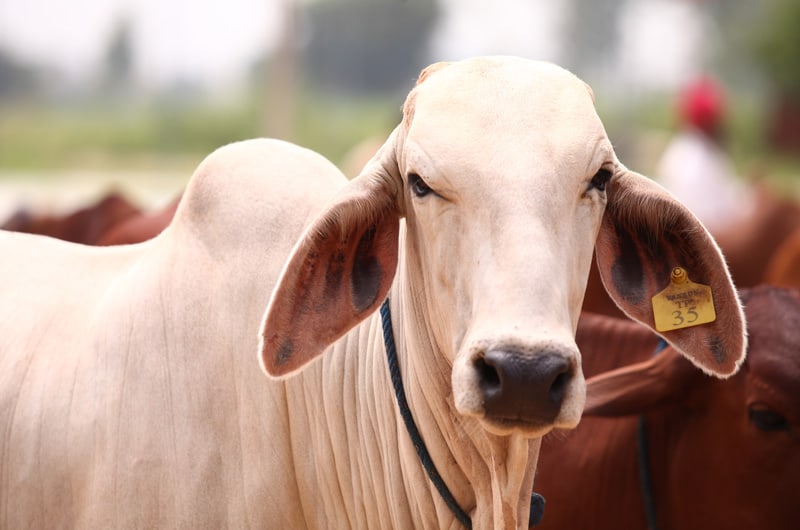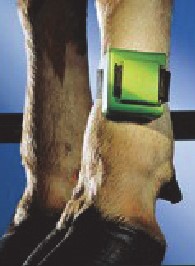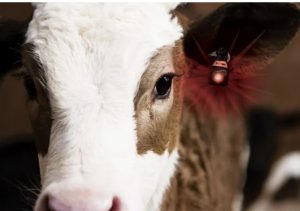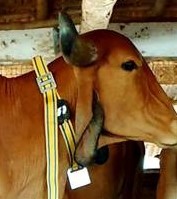
Animal Health Internet of Things
Internet of Animal Health Thing
You must have heard the term ‘Internet of Things’ (IoT) in the context of consumer products, durable goods, cars, elevators, trucks, refrigerators, garages, personal physical parameters such as heart rate, walk, etc. For example, when the elevators are equipped with sensors, it will generate information on how many times it was used in the day, how many people in each sojourn traveled, which elevator is being used more frequently and if equipped with image analysis even who is using and how much. So, in simple terms any object (other than computers), that generates use-based or performance data (things), are combined with sensors and computing capability can exchange and consume data with minimal human intervention. IoT is going to impact our everyday life in a big way and as per an estimate that by 2025 around 100 billion devices will be connected to IoT devices and will have an economic impact of more than $11 trillion. Although monitoring devices using technologies is an old concept but new and affordable technologies such as smartphones, miniaturization of sensors and circuits/network and cloud computing are very rapidly evolving these devices. IoT devices use different communication models, such as device-to-device, device-to-cloud, device-to-gateway, and Back-end Data sharing.
Animal Health IoT
In food as well as companion animals it is important to understand their behavior and performance as these are directly related to their health and productivity. Globally, the livestock population is huge and since their life expectancy is much lower than humans, the population turnover is high hence the amount of data animals produce is much higher than humans Acquisition of animal data for performance evaluation has been practiced since long, but such data was collected manually and analyzed with a long lag period, which compromises the analytical deductive value.
 In order to help the farmers or pet owners, it is important to capture animal’s events and data in real-time and analyzed immediately to draw interpretation for potential interventions, if any. With such a huge livestock population spread over mostly in rural areas and the pet population thinly distributed amongst owners, data acquisition, analysis and sharing are going to be a huge challenge. Amongst all the sectors, livestock is one sector that generates a huge amount of useful data which will be of immense use. IoT technologies will change the way livestock data would be acquired in the future. There is every possibility that in the next 10 years globally livestock will be wired (not in the physical sense) with sensors to collect data on every movement and event in the animal. In this paper, I will attempt to describe what kind of IoTs are already available and the future devices, what they should look or ask for and how to use these to draw optimum benefits.
In order to help the farmers or pet owners, it is important to capture animal’s events and data in real-time and analyzed immediately to draw interpretation for potential interventions, if any. With such a huge livestock population spread over mostly in rural areas and the pet population thinly distributed amongst owners, data acquisition, analysis and sharing are going to be a huge challenge. Amongst all the sectors, livestock is one sector that generates a huge amount of useful data which will be of immense use. IoT technologies will change the way livestock data would be acquired in the future. There is every possibility that in the next 10 years globally livestock will be wired (not in the physical sense) with sensors to collect data on every movement and event in the animal. In this paper, I will attempt to describe what kind of IoTs are already available and the future devices, what they should look or ask for and how to use these to draw optimum benefits.
Pedometer: Pedometers have been used in cows for the last several decades. Typically, it is a device to collect information on animal activity by using sensors applied to the animal’s foot. The signals generated by the activity is then captured and transmitted to the central computer using boosters and antenna. The data is analyzed to profile activity phases. The assumption here is that in certain physiological states, such as, during oestrus, animal activity increases. Combined with the animal’s historic data, if it fits into the breeding window, the animal is alerted as possibly in oestrus. There are several companies marketing such a product and quite a few of these have good sensitivity and specificity (high right alert and very low false alarm).
Rumen pH monitoring Bolus
This IoT is not very popular in general farmers but has immense value for researchers who are interested in monitoring the effects of feeds and fodder on rumen health.  This device is equipped with a sensor that can detect rumen pH and can alert even when the pH variation is in a narrow range. Each device also has an internal device identification which while feeding to a cow can be linked to cow identification. The frequency of data acquisition and alert range can be defined externally. A major problem is that the capsular form device needs to be fed (with feeding guns). It must get stuck in the rumen and to be sure that daily monitoring for the first few weeks is necessary. Infrequently it is voided in faeces hence should be recovered. Although it generates huge data in practice it is difficult to change feed frequently. There is also the problem of individual cow variations. For these reasons, this IoT device did not receive an encouraging response from the farmers.
This device is equipped with a sensor that can detect rumen pH and can alert even when the pH variation is in a narrow range. Each device also has an internal device identification which while feeding to a cow can be linked to cow identification. The frequency of data acquisition and alert range can be defined externally. A major problem is that the capsular form device needs to be fed (with feeding guns). It must get stuck in the rumen and to be sure that daily monitoring for the first few weeks is necessary. Infrequently it is voided in faeces hence should be recovered. Although it generates huge data in practice it is difficult to change feed frequently. There is also the problem of individual cow variations. For these reasons, this IoT device did not receive an encouraging response from the farmers.
Fever Tags: A company in the USA has developed ear tags that can detect fever in animals. It is inserted with RFID chip as a device ID and sensors to detect body temperature. The data is then sent through an internet gateway to the central computer which analyses signals to indicate if the animal is having a fever. In order to invite the attention of the farmer in case, the animal is having fever the tag emits flash red light Such devices have two-way communications. The captured data is sent to the central processing unit and in turn, processed signals also activate the device to perform certain functions (such as bulb flash).
 These tags consume battery hence battery replacement may be more frequent. There are many studies published on the efficacy of such devices. An important variable is the displacement of the device in-ear pinna which results in not detecting feverish cows. Such devices also need to be calibrated properly, even for the effect of seasons. One Canadian study has shown that the light flash was recorded well beyond the factory-standardized threshold. The study also showed that the red- light flash almost coincided with the observation of symptoms by the farm staff. Improved performing fever detection tags are now available that have the facility of the set threshold. In India animals are washed once or twice a day, this might also affect the threshold. There is also the likelihood that the detection of even a minor degree of fever might tempt the owner to seek treatment, which would compromise milk quality if the withdrawal period is not followed. For Indian farmers, the cost of infrastructure would also be a major constraint.
These tags consume battery hence battery replacement may be more frequent. There are many studies published on the efficacy of such devices. An important variable is the displacement of the device in-ear pinna which results in not detecting feverish cows. Such devices also need to be calibrated properly, even for the effect of seasons. One Canadian study has shown that the light flash was recorded well beyond the factory-standardized threshold. The study also showed that the red- light flash almost coincided with the observation of symptoms by the farm staff. Improved performing fever detection tags are now available that have the facility of the set threshold. In India animals are washed once or twice a day, this might also affect the threshold. There is also the likelihood that the detection of even a minor degree of fever might tempt the owner to seek treatment, which would compromise milk quality if the withdrawal period is not followed. For Indian farmers, the cost of infrastructure would also be a major constraint.
IoT to Detect Rumination/Rest/Feeding Behaviour:
Ear-tag-based accelerometer system for detecting rumination time, chewing cycles, and rumination bouts are now available in the market (Smart bow (Smart bow GmbH, Weibern, Austria). The device uses a 10-Hz accelerometer. Zoetis is marketing an ear tag (Smart bow) that can detect rumination activity and location. The ear tags basically are inserted with an accelerometer that can detect typical movements. It is known that during rumination the animal’s ear movements can be differentiated. The device is first allowed to monitor the normal activity profile of the cow, and then subsequently based on the threshold the device will send alerts in case rumination is affected. The algorithm can alert for both short-term and long-term rumination abnormalities. The device would be useful in feed formulation and addressing rumen health issues. The same device also detects oestrus-related activities and in various field studies, the accuracy of heat detection in cows is reported to be higher than 97%.
Feed Dispensers: It is now well established that cows should be fed total-mixed-ration to avoid rapid and frequent rumen pH changes which adversely affect the digestibility of the feedstuff. But, on many farms, TMR poses difficulties. An alternative in such a farm is to feed concentrate feed spread over 5-6 times in a day. From an operational point of view, this becomes an issue. In the market, auto-feed dispensers are available which can detect the animal ID from the transponders it is wearing in the neck and based on its weight, production and pregnancy levels, the feed allowance allocated, feed is dispensed 5-6 or as many times as programmed. The system would also send alerts about cows that have not consumed the allocated concentrate. Technologically this is a fairly simple device but requires elaborate infrastructure and investment hence not feasible for small-hold farmers. Chitale Dairy in Sangli (Maharashtra) has been using the system since last more than 20 years.
Should Do Indian farmers use these devices?
There is no second opinion, even Indian farmers need IoT devices that can help them in early disease detection better data analysis to know cause and factors to implement preventive health plans and improve breeding and production performance. But, the selection of the device should be very careful and must consider the following points:
- Neck-band in place of ear tag:
 Considering the constraint that ear tag-based devices have issues related to displacement due to animal movements, which will be a big challenge in India, such devices be developed as the neckband. These are easy-to-secure, remove if the farmer wants to use on any other cow. Preferably it should be placed so low cost that farmers should be able to buy a locked neckband for each cow. This will also avoid the logistics of changing and assigning new cow IDs. should be able to detect fever, movements, rumination, feeding time, resting period, oestrus, threatened abortion episode and calving time as well as sickness (both high and low body temperature).
Considering the constraint that ear tag-based devices have issues related to displacement due to animal movements, which will be a big challenge in India, such devices be developed as the neckband. These are easy-to-secure, remove if the farmer wants to use on any other cow. Preferably it should be placed so low cost that farmers should be able to buy a locked neckband for each cow. This will also avoid the logistics of changing and assigning new cow IDs. should be able to detect fever, movements, rumination, feeding time, resting period, oestrus, threatened abortion episode and calving time as well as sickness (both high and low body temperature). - Developed for small-hold farmers: These devices have been developed in western countries, keeping in mind the behavior of animals in the area. In these countries, there is a lot of uniformity in behavior amongst different breeds, which has been achieved due to careful breeding programs. In India however, the animal behavior is very diverse, very docile and agile cows can be found in the same herd. The device for use in the Indian context, therefore, should be standardized to individual cow behavior. That means each cow’s data need to be acquired for the first few days for the machine to lean (using artificial intelligence) and then this can be used as a threshold.
- A simple system with no infrastructure: Since in India and several developing and under-developed countries animal holding is small and even the land-holding is small, farmers can’t invest in elaborate infrastructures like antenna and boosters. Use of alternate technologies, such as Low Power Wide Area Network radiotechnology (developed by 3GPP) and narrowband (NB) technology using a subset of the LTE standard limited to 200 kHz band and uplink and downlink communication protocols.
- Threshold standardized to the individual animal: The movement behavior in Animals in India would be radically different than in western countries. There are mixtures of farmers who keep animals tied with various length leash, or keep them loose or loose during some part of the day and tied in the night. The device threshold should be adjusted accordingly. The data must also carry a flag of a housing system for each cow.
- Cost is an important factor: It should be affordable to even a farmer owning one animal.
Constraints: Human health IoT carries a lot of legal constraints of privacy and security but is no issue in animals. Interoperability issues, however, need to be addressed. Companies marketing such devices also provide herd data management software. Since many farmers are already using some of the other herd management systems, this should not be compulsory as otherwise, it will offer challenges of loss of earlier data of animals. The devices should be marketed as an independent device with a facility to link the signals to existing software used by the owners. In case that is not possible, at least there should be the flexibility of data portability so that important data is not lost only because a new and potent IoT device has been introduced in the market and the farmers want to use the same.
Dr. Abdul Samad
